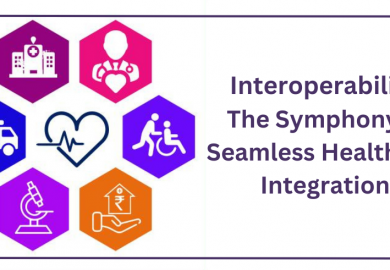The future of Hybrid Care Models
Before Pandemic, less than 1% of total outpatient visits accounted for telehealth. With the onset of pandemic, this number greatly accelerated with the use of telehealth accounting for 13% in 2020. But, as we have seen this number fell to 8% in subsequent year due to drop in Covid cases. Despite that telehealth is not just progressing, the healthcare providers are increasing their investments in telehealth domain. Why is that? Because the genie is out of the bottle and almost 61% of the people now prefer their healthcare providers to have both digital and in-person access to cater to their healthcare needs. This hyper digitalization of virtualization of healthcare is giving way hope to proponents of hybrid care models.

We know that physical care delivery models can never be extinguished because some services do require in-person treatments like surgeries. But proponents of telehealth point out rightly that physical touchpoints can almost entirely be digitized with tools like wearables, health coaching and artificial intelligence. But the matter of fact is that some patients want virtual care, and some don’t. So the question is how does care team decide the use physical and digital avenues to meet their healthcare needs and personal preferences.
This is where hybrid models move the needle on improving care while reducing costs in the inpatient care. We all know the critical role that hospitalization plays for some patients that need to be seen by their physicians, but inpatient and hospitalization costs have risen consistently over the years. So it is absolutely logical to deliver a percentage of care through telehealth that doesn’t need to be delivered in an inpatient facility.
In a perfect hybrid care model, the providers’ would be able to decide the modality of care based on specific patient’s needs. There is a correlation between access and quality and the level of interaction needed would decide the sort of care. Hybrid models, like hospital at home, would be prevalent, use technology to coordinate care and require inclusion and exclusion criteria to make sure patients are receiving the type of care that best fits their situation.
This also streamlines with value based care. Here healthcare providers instead of getting paid on per-visit basis can select the delivery models most effective for their patients. That makes programs, that operate in capitated or other value-based models, low-hanging fruits for hybrid models in the near-term, including accountable care organizations, payer-provider organizations, self-insured employers and Medicare Advantage plans.
But even in a fee-for-service ecosystem, hybrid models should be a cost saver by winnowing down the number of in-person consultations, and preventing worse (and more expensive) outcomes down the line by increasing access to care. This could especially move the needle among the small percentage of high-need patients that consume the majority of healthcare.
Data from Philadelphia-based Jefferson Health in 2019 showed using telehealth platforms to prevent patients from unnecessary ER visits saved providers some $1,500 per patient encounter. And hybrid models, like hospital-at-home platforms — integrated models where telehealth plays a huge role — can save 30% or more per admission, while resulting in fewer complications than inpatient care, according to one pilot.
This is not just a silver lining for the patients. Like in other industries, a majority of healthcare workers coming out of the pandemic have said that they’d prefer some sort of hybrid work model where possible. According to Deloitte, most healthcare employers either planned to or had started implementing new work methods at the end of 2020, though it’s rarely an option for burned-out frontline staff. This increased virtualization of workforce would help combat isolation by reinvigorating the families.
But even as hybrid care models become more accepted, barriers to adoption remain. One of the largest is cultural, as some providers are leery about the growing use of digital health.
Culturally, if your organization isn’t open to it, your community isn’t open to it, you can only do small improvements but it won’t get you very far. Financial concerns are also a roadblock, as coming up with new care models with the goal of reducing inpatient visits in a majority fee-for-service environment threatens provider revenues. Additionally, the future of reimbursement for virtual care is still being written, as is how much of digitally delivered care the government allows after the pandemic.
Now, more than two years into COVID-19, many states have legislative mandates that they have to reimburse for telehealth, though a handful do not. Virtual care vendors’ biggest concern is that sweeping telehealth flexibilities that caused use of the modality to soar during the pandemic might be rolled back when the public health emergency expires, Zoom’s Emerson said.
Currently, there are a slew of bills on Capitol Hill that would extend this access in various shapes and forms. One bipartisan proposal that’s received significant support from the industry is the CONNECT for Health Act, which would permanently remove all geographic restrictions on telehealth services, and allow patients to receive telehealth service in the home and other sites.
It’s also imperative that, as healthcare delivery becomes increasingly more virtual, no populations — regardless of race, age, socioeconomic status, sex, or location — are left behind, as some worry the growing use of telehealth will exacerbate America’s digital divide.
Many older adults, especially low-income seniors and those in rural areas, face acute difficulties accessing telemedical services. A study conducted in 2020 found more than 41% of Medicare beneficiaries lacked access to a computer with high-speed internet access at home, while almost 41% didn’t have a smartphone with a wireless data plan.
More than a fourth of beneficiaries didn’t have either option, making conducting a real-time video visit with a doctor at home almost impossible. Since the beginning of the pandemic, the federal government has benchmarked millions in grants to ameliorate the digital divide and expand rural access to telehealth.
One solution is ensuring the communities you serve have access to any broadband or devices required for their care delivery. Among other measures, Healthcare Providers could work with telecommunications companies to try to improve cellular connectivity to rural areas.
Recent Posts
360-Degree Patient Care: A Comprehensive Approach to Healthcare
Interoperability: The Symphony of Seamless Healthcare Integration
Categories
Recent Comments
Archives
- February 2025
- November 2024
- July 2024
- April 2024
- February 2024
- November 2023
- September 2023
- August 2023
- February 2023
- January 2023
- July 2022
- April 2022
- March 2022
- February 2022
- January 2022
- December 2021
- November 2021
- October 2021
- September 2021
- March 2021
- December 2020
- November 2020
- October 2020
- May 2020


